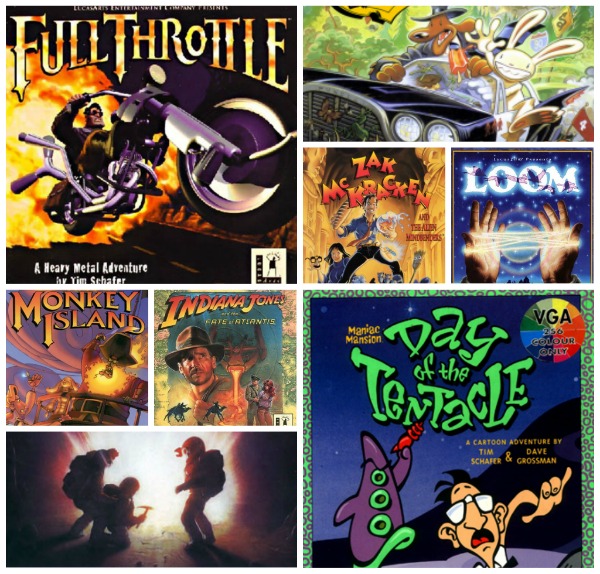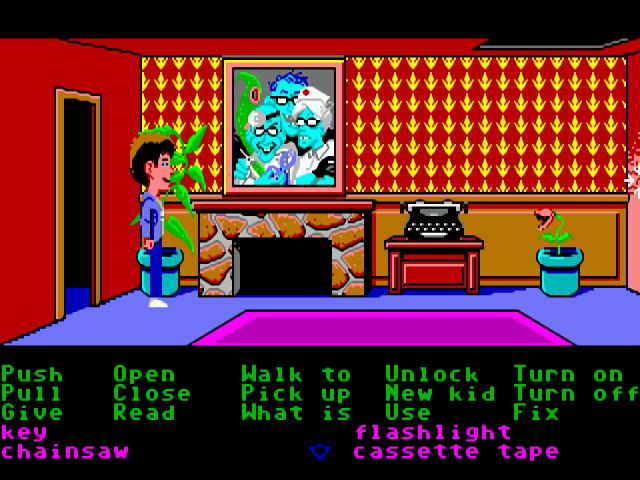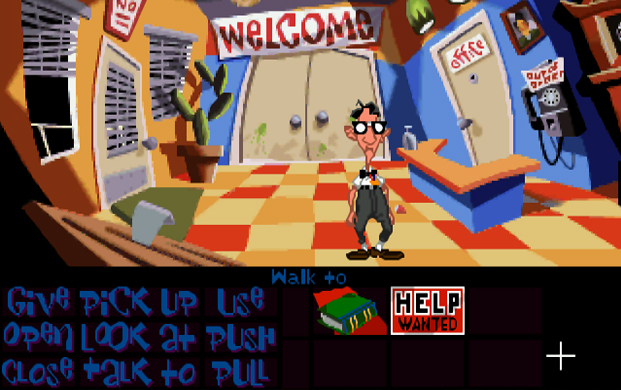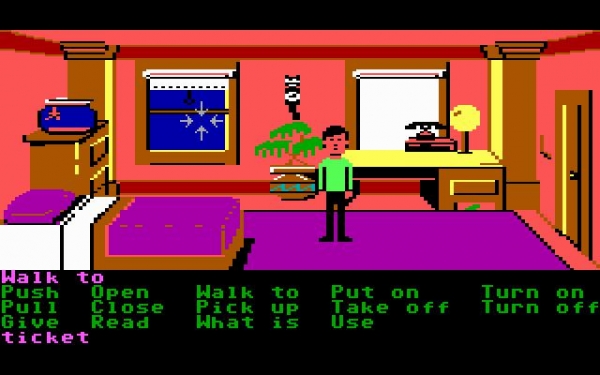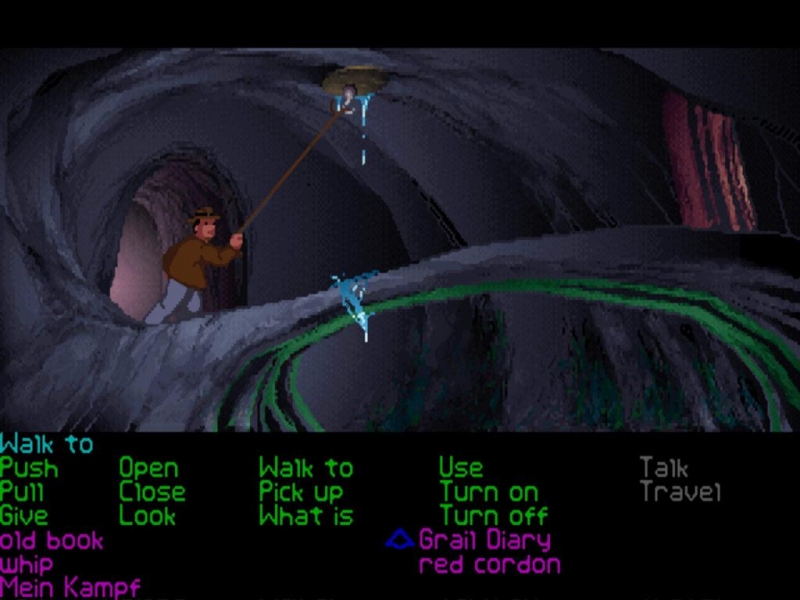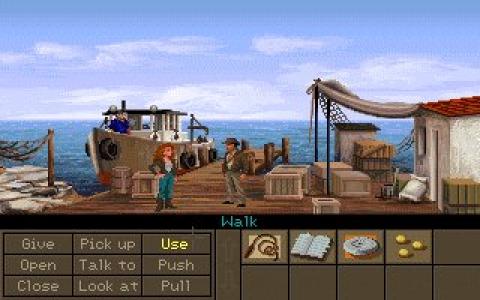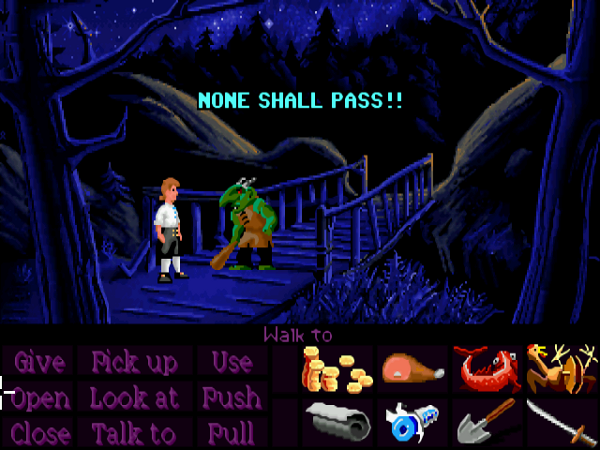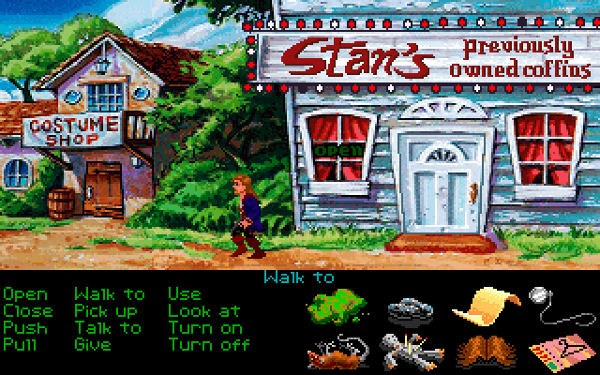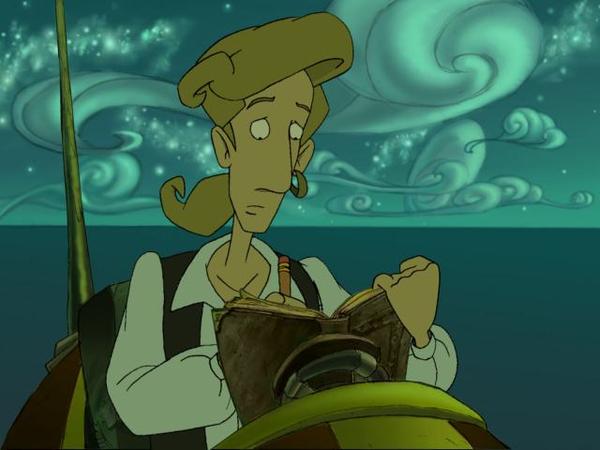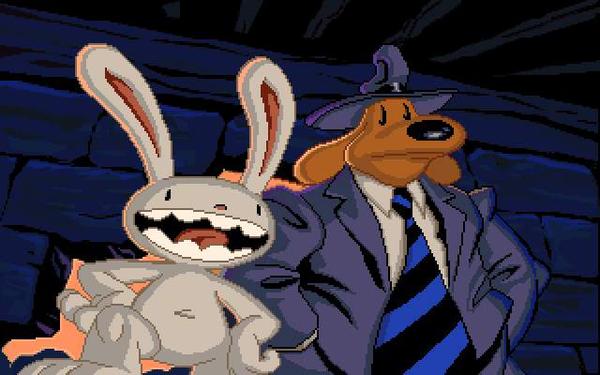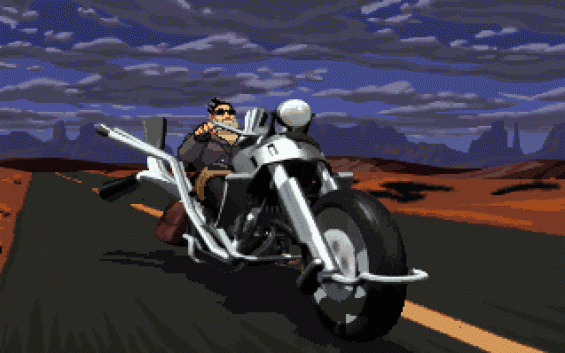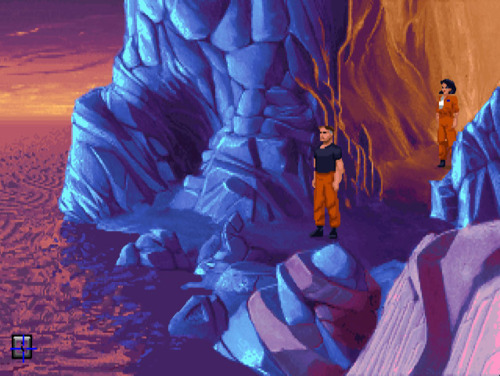Back in the 80’s, Lucasfilm wasn’t just a film production company, but also a had a video-game department. With success and time, the division became its own company, and so, Lucasarts was born. Amongst their biggest hits, we can count the several Star Wars games they released over the years, but what really grabbed everyone’s attention even before that was a unique type of games: their point-and-click adventures.
Graphic Adventures, or Point and Click adventures was a more intuitive take on the text adventures of the old days, where players chose actions from a menu and performed them over objects on the screen. The engine that gave life to most of these classics was called “SCUMM”, short for “Script Utility for Maniac Mansion”, the first game that used this system. There were only about a dozen games which used this script, but they all became classics on their own, and now, thanks to our list of the 12 Scumm Games by Lucasarts, we get to remember them.
Maniac Mansion & Day of the Tentacle
Maniac Mansion from 1987 has the privilege of having been the first game to use the Scumm technology, and having the system/engine named after it. It was a radical change from previous adventure titles like Labyrinth, thanks to its easy use where users could just hover the cursor with their keyboard or mouse to see what was on a room. In Maniac Mansion, players controlled three characters out of seven playable ones, each with different skills and personalities, who had to infiltrate the Edison’s house to rescue Sandy, Dave’s girlfriend. The game could be credited by creating the genre of point-and-click adventures on its own, and even today has seen many remakes and ports, both official and fan-made.
The game was so popular that it had a sequel in 1993, Day of the Tentacle, where Bernard, one of the original 7 characters returns with newcomers Hoagie (a typical heavy metal guy) and Laverne (a medical student) who go back to the mansion to stop the Purple Tentacle, who has grown arms and is trying to take on the world. The plan is to travel to the past and stop the Purple Tentacle from drinking the nuclear waste that caused his mutation and gave him arms, but by accident the characters end misplaced in time, with Bernard being back in the present, Hoagie being sent 200 years to the past, and Laverne 200 years to the future. The gameplay emphasized teamwork, with characters being able to send each other the items they find in different times, and actions in the past influencing the outcome of events in the future.
Zak McKracken and the Alien Mindbenders
Another “Oldie but Goldie”, Zak McKracken is a game from 1988 where players control a tabloid writer named Zak (full name Francis Zachary McKracken), who tries to stop the Caponians (a group of aliens who have infiltrated the phone company) from reducing the intelligence of everybody on Earth using a 60 Hz “hum” (scary prediction there, Lucasarts!). Their only hope is a defense mechanism created by the Skolarians, another ancient alien race, which just needs to be reassembled. Too bad the parts are spread all over the Earth and Mars, right? The game has countless fan-made sequels, as an official one never came out.
Indiana Jones and The Last Crusade & Indiana Jones And The Fate of Atlantis
Indiana Jones And the Last Crusade was one of the first games licensed after a movie, and it only makes sense Lucasfilms gave division took care of it. On the screenshot above can be seen one of the remakes for 256 colors done as technology progressed and fans still claimed for the game. The plot follows closely the movie, but has an interesting system on which there are several ways to solve a puzzle (for example, players could wear a costume, sneak, fight or talk with Nazi sentinels in order to avoid them), and at the end of the game would get a score for how well they performed.
Its successor, which came out way before people even started talking about the fourth movie had an entirely original story. Indiana Jones And The Fate Of Atlantis from 1992 was acclaimed as a fantastic sequel thanks to features like being able to choose which gameplay should be emphasized (having Indiy’s partner Sophia tagging along, going solo, or fighting your way to Atlantis) and the most charismatic Dr. Jones we’ve ever seen on videogames. As the title suggests, in this game Indy tries to find the whereabouts of Atlantis, the lost city, before the Nazis do.
Loom
Loom, the 1990 classic, was a different take on the graphic adventure genre, as instead of having the player choose from a list of verbs to perform actions, players instead had to pick notes to cast several different spells. As readers might have guessed, in Loom gamers got to control Wizard Bobbin Threadbare in a more serious, fantasy setting. This is the first time Lucasarts (Still Lucasfilm at the time) decided to make sure it was impossible to get to a dead-end, a sort of common occurrence in previous games that forced players to restart the game or a previous save, feature which carried over to all of the upcoming point-and-click adventures.
Monkey Island (Original Trilogy)
Monkey Island, probably LucasArts (yes! It was after this title that they changed their name) most well-known adventure, was released in 1990 and was sort of a back-to-basics for the studio, using most of the features that had worked well in previous games. The Secret of Monkey Island (such is the name of the first game) had it all: beautiful graphics, sword combat, pirate insults, and the most idiotic-but-lovable main character yet, Guybrush Threepwoord himself. His name came from the fact that after designing him, he didn’t yet have a name, so the sprite was saved with the filename guy.brush, and it stuck. In this game also debut his (at the time) girlfriend, Elaine Marley, and his nemesis, the Ghost Pirate LeChuck.
The game was so well received that it got a sequel right away, Monkey Island 2: LeChuck’s Revenge in 1991. The game starts with Guybrush about to fall down a pit, and Elaine trying to save him, and most of the story is told via flashback to explain how they got there. Both of these games were remastered for PC and Xbox 360 in fantastic special editions that add recorded dialog, modern-day graphics, and a more intuitive interface for a story that was fantastic to begin with, but alienated younger players because of how raw and dated the game looked by today’s standards.
The franchise saw a triumphant return with a third game in 1997, making this Lucasarts 12th and final game to use the Scumm engine, and the last of the classic era. This game (sort of) ignores the end of Monkey Island 2, and sends Guybrush back to the Caribbean, who will be trying to save his girlfriend and soon-to-be wife Elaine from the Ghost Pirate LeChuck once more. Fans were shocked to hear what their beloved characters looked and sounded like thanks to the enhanced graphics and CD-rom technology which enabled spoken dialog for the first time in the series. If well this was the last Scumm game officially released by LucasArts, the franchise has seen a couple more incarnations and remakes during the years, most recently Telltale’s fantastic episodic series “Tales of Monkey Island”.
Sam & Max: Hit The Road
Sam & Max, created by Steve Purcell, spawned a whole lot of games (at least 5, nowadays) but older Lucasarts fans might remember it as “the game that changed the interface in Scumm games”. Since this point on, the big list of verbs was reduced to 4 icons: actions with Sam’s hand (push, pull, grab), Actions with Sam’s eyes (look, stare), Actions with Sam’s mouth (lick, talk, chew), or actions with Max. This interface, which in the long run was more intuitive divided fans, but luckily, the charisma of the two main characters, Freelance Police Sam & Max won them over. In the game, they get sent to look for a Yeti, who got lost from a circus freak-show.
Full Throttle
We can’t mention Full Throttle from 1995 without mentioning Tim Schaffer, the genius behind Psychonauts, Grim Fandango, and many other Lucasarts classics. This “heavy metal adventure” puts the player in control of Ben, leader of the Polecats, who has been framed for killing Malcolm Corley, the last developer of regular motorcycles which are fading away to give place to hover-crafts. The ambiance of the game is that of a dystopian, almost cyberpunk future with dark colors, long roads and futuristic technology. A big portion of the game involves driving on a motorcycle figuring out how to cross certain obstacles, while the rest of the game has a system similar to Sam & Max’s. Although a cult classic by now, the game was criticized for its short duration. Still, its dedicated fanbase has been creating sequels and side games which deepen the world depicted in the game.
The Dig
The Dig, Lucasarts’ last original franchise before ditching the Scumm system, is a game from 1995 based on a story by Steven Spielberg from Amazing Stories. The story involves a group of scientists traveling to an asteroid in a collision course to Earth, which the team eventually find it’s hollow, and actually a starship which takes them to an unknown planet. The title puts heavy emphasis on its sci-fi elements as opposed to the humor, and delivers a deep story with a fantastic atmosphere. It had moderate success, as it departed from the conventions of the genre, and many felt it was a step backwards in terms of the titles Lucasarts had become renowned for.
Other point and click adventures came out throughout the years, without really using the Scumm system, but these 12 titles and others like Sierra’s King Quest series are regarded as the representatives of the golden age of point-and-click adventures. After this nostalgia trip, we’re looking forward to read your comments and comment on your favorite titles.

